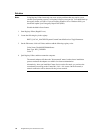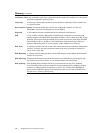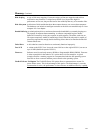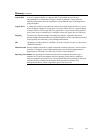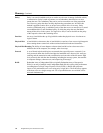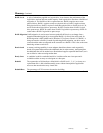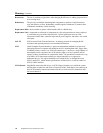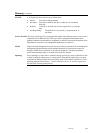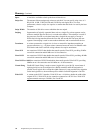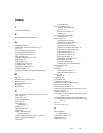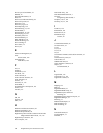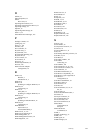
MegaRAID Express 500 Hardware Guide
128
Glossary,
Continued
Reconstruct
The act of remaking a logical drive after changing RAID levels or adding a physical drive
to an existing array.
Redundancy
The provision of multiple interchangeable components to perform a single function to
cope with failures or errors. Redundancy normally applies to hardware; a common form
of hardware redundancy is disk mirroring.
Replacement Disk
A disk available to replace a failed member disk in a RAID array.
Replacement Unit
A component or collection of components in a disk subsystem that are always replaced
as a unit when any part of the collection fails. Typical replacement units in a disk
subsystem includes disks, controller logic boards, power supplies, and cables. Also called
a hot spare.
SAF-TE
SCSI Accessed Fault-Tolerant Enclosure. An industry protocol for managing RAID
enclosures and reporting enclosure environmental information.
SCSI
(Small Computer System Interface) A processor-independent standard for system-level
interfacing between a computer and intelligent devices, including hard disks, floppy disks,
CD-ROM, printers, scanners, etc. SCSI can connect up to 7 devices to a single adapter (or
host adapter) on the computer's bus. SCSI transfers eight or 16 bits in parallel and can
operate in either asynchronous or synchronous modes. The synchronous transfer rate is up
to 40 MB/s. SCSI connections normally use single ended drivers, as opposed to
differential drivers. The original standard is now called SCSI-1 to distinguish it from
SCSI-2 and SCSI-3, which include specifications of Wide SCSI (a 16-bit bus) and Fast
SCSI (10 MB/s transfer).
SCSI Channel
MegaRAID controls the disk drives via SCSI-2 buses (channels) over which the system
transfers data in either Fast and Wide or Ultra SCSI mode. Each adapter can control up to
three SCSI channels. Internal and external disk drives can be mixed on channels 0 and 1,
but not on channel 2.
Cont’d




